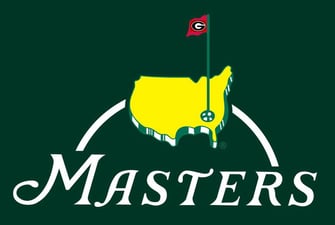 World number one Rory McIlroy will be joined by the golfing greats as he hunts down history as well as his first Green Jacket when he steps out on to the first tee at Augusta National today, the home of the US Masters, the first of four major championships in professional golf. The return of four-time champion Tiger Woods has already heightened expectations around a tournament that needs little hyping. Jack Nicklaus has the most Masters wins, with six between 1963 and 1986. Arnold Palmer and Tiger Woods have won four each, and five have won three titles at Augusta: Jimmy Demaret, Sam Snead, Gary Player, Nick Faldo, and Phil Mickelson. For the non-golfers, scoring the number of shots taken to complete a round of golf is not complicated, but current golfing regulations only permit hand-written records and signatures. As with many manual systems, mistakes can happen and can be costly.
World number one Rory McIlroy will be joined by the golfing greats as he hunts down history as well as his first Green Jacket when he steps out on to the first tee at Augusta National today, the home of the US Masters, the first of four major championships in professional golf. The return of four-time champion Tiger Woods has already heightened expectations around a tournament that needs little hyping. Jack Nicklaus has the most Masters wins, with six between 1963 and 1986. Arnold Palmer and Tiger Woods have won four each, and five have won three titles at Augusta: Jimmy Demaret, Sam Snead, Gary Player, Nick Faldo, and Phil Mickelson. For the non-golfers, scoring the number of shots taken to complete a round of golf is not complicated, but current golfing regulations only permit hand-written records and signatures. As with many manual systems, mistakes can happen and can be costly.
The 1968 Masters Tournament was the 32nd Masters Tournament and the winner was Bob Goalby, beating Roberto DeVicenzo, the reigning British Open champion, by one stroke. On the back nine in the final round, Goalby birdied 13 and 14 and eagled 15 to record a 66 (−6) and a total of 277 (−11). At first it appeared that he had tied with DeVicenzo and the two would meet in an 18-hole Monday playoff, but DeVicenzo returned an incorrect scorecard showing a par 4 on the 17th hole, instead of a birdie 3, sunk with a two-foot putt. Playing partner Tommy Aaron incorrectly marked the 4 and DeVicenzo failed to catch the mistake and signed the scorecard.
The governing body of golf in the United States is the United States Golf Association (USGA). Their rules stated that the higher written score signed by a golfer on his card must stand,[3] and the error gave Goalby the championship. Ironically, Goalby discovered a scoring error he had made on the card he was keeping for Raymond Floyd, his playing partner in the final round, which he corrected at the scorer's tent. He had marked Floyd down for a par-3 on the 16th hole, when Floyd had actually bogeyed the hole. Floyd ended up in a tie for seventh place with, among others, Aaron. Both Aaron and Floyd would win the Masters in future years, Aaron in 1973 and Floyd in 1976.
This is an example of the importance of data integrity. The MHRA recently published guidelines on data integrity expectations for the pharmaceutical industry and introduced the ALCOA principles for data control: A - attributable to the person generating the data, L – legible and permanent, C – contemporaneous, O – original, A – accurate. Let’s hope the USGA have no data integrity issues at this year’s Masters.






